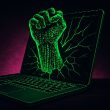Apple Hacking Tools Double the Cost of Other Brands on Dark Web.
There was a time when hackers needed to be really smart to accomplish their malicious deeds; now they only need to spend a meager amount of money to get the necessary tools and carry out attacks. Or so it seems if we have a look at the recently published Dark Web Price Index.
According to the US edition of the Dark Web Price Index, published by Top10VPN, the illicit marketplace of the web is nothing short of a Pandora’s Box where there is something for everyone. The infamous underground internet marketplace has almost everything up for sale from ready-to-use phishing pages for attacking high-profile brands to password cracking tools, WiFi network hacking programs and all sorts of hacking tools for very low rates.
See: On Dark Web, Your Facebook ID is worth $5.20 & Gmail ID just $1
Seems like, anyone can become a hacker now that so much is available at the Dark Web as you can easily find hacking tools at really low rates, where some being sold for just $2 and even less. Phishing pages are available for big brands including Facebook, Apple, PayPal, and Netflix.
The full-fledged hacking toolkit can be bought for $125, which is a bit too low for the purpose that it can serve. The ready-made phishing web pages are the exact replicas of trusted brands. Keyloggers are also available for even less than $2.
See: Cybercriminals Selling Social Security Numbers of Infants on Dark Web
Interestingly or rather disturbingly, there are complete guides also available to enlighten wannabe scammers about how to use the hacking tools and carry out phishing or malware attacks. Mostly the guides are sold for free with the hacking tools. This sort of exchanges of critically dangerous tools definitely twofold the threat of a variety of online frauds, as if these already aren’t common.
The head of research at Top10VPN, Simon Migliano, states that it becomes apparent from the price index that hacking tools are quite affordable so the incidences of everyday hacks may increase. It also nullifies the common conception that hacking is the domain of sophisticated organizations like Anonymous and “techy bedroom warriors,” adds Migliano, because groups like Anonymous have been left behind by the newly sprouted breed of novice hackers. These easily make use of the tools and programs available at the Dark Web to fulfill their nefarious objectives.
As per the report from the national fraud reporting center, Action Fraud, over 12,000 hacking incidents occurred between Oct 2017 and Mar 2018. The total losses incurred averaged to a whopping $36m. It has, therefore, become increasingly important to act upon the recommendations made by the Take Five campaign initiated by the UK government in collaboration with Financial Fraud Action UK.
See: Dark web marketplace found selling access to the airport’s security system
The primary emphasis of the campaign is upon installing built-in security measures that banks and web browsers generally offer because these serve as the perfect defense measure against a wide range of cybercrimes. Such as the malware infections distributed via fake pop-ups on online banking platforms, scam alert messages and inauthentic brand websites.
These techniques are used to extract personal and/or financial data. Moreover, always check the email address of the sender before downloading or even clicking upon any attachment especially if it refers to the recipient as Dear Customer, or contains grammar and spelling errors. Also, keep checking your credit report regularly and if you sense some kind of foul play, immediately contact the credit card supplier or your bank.












